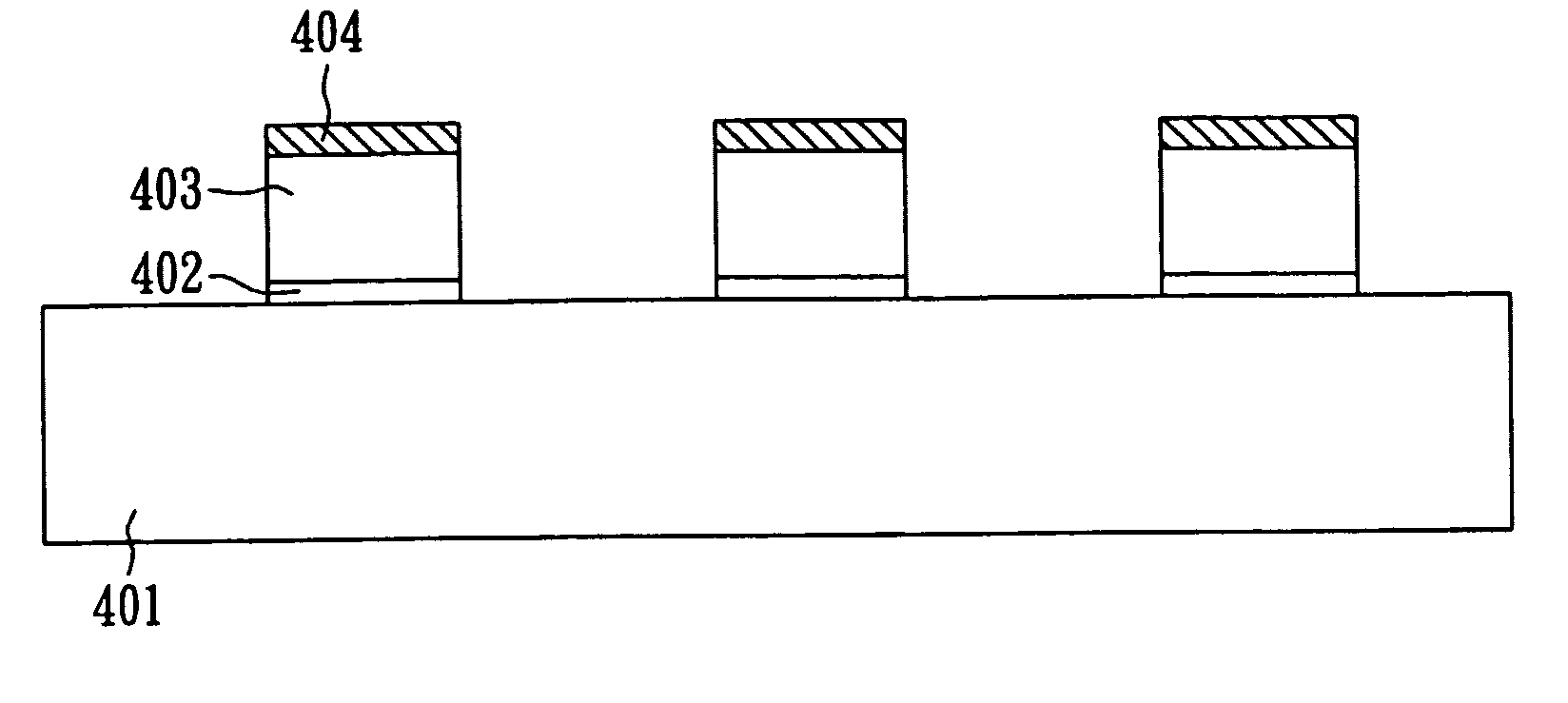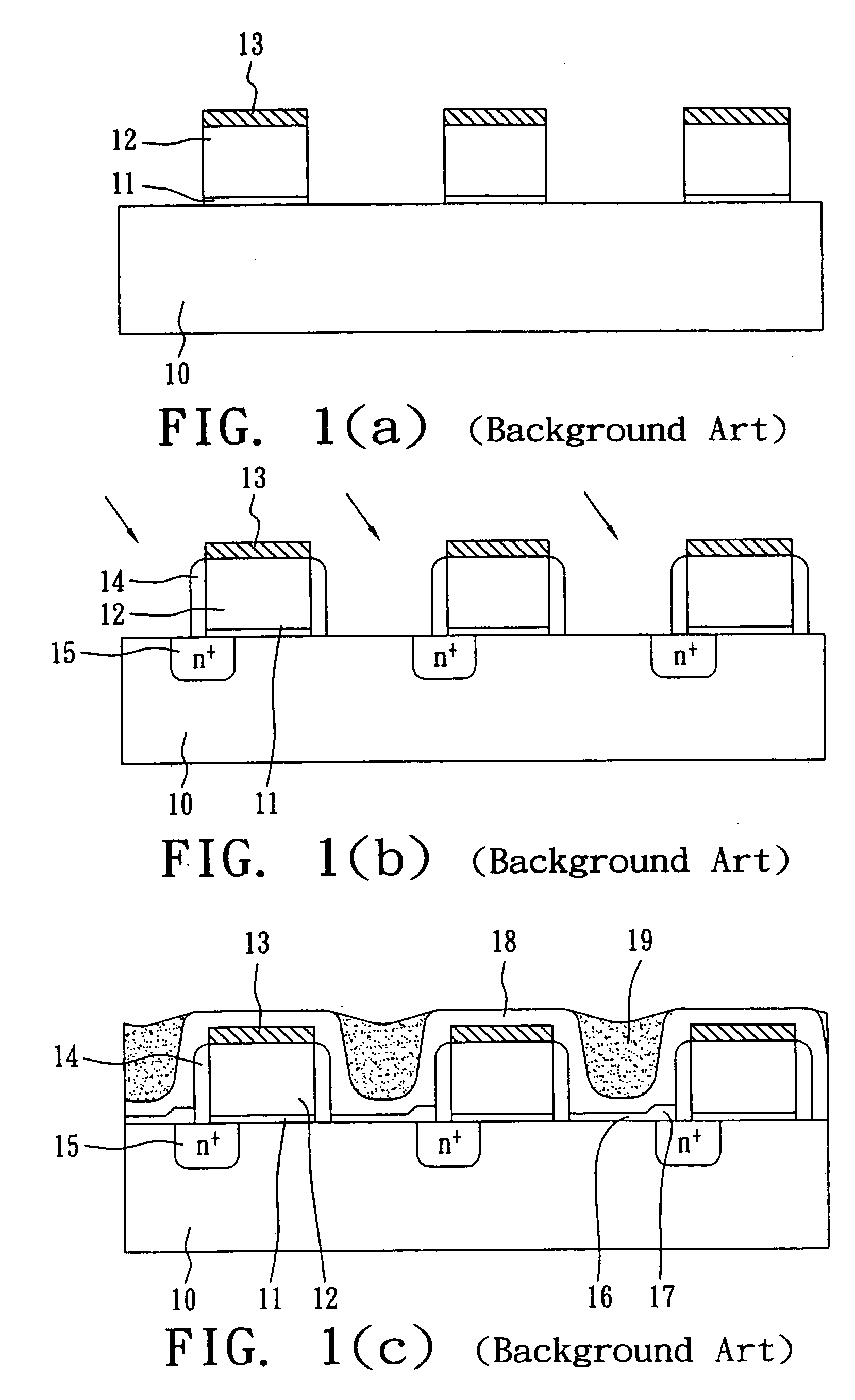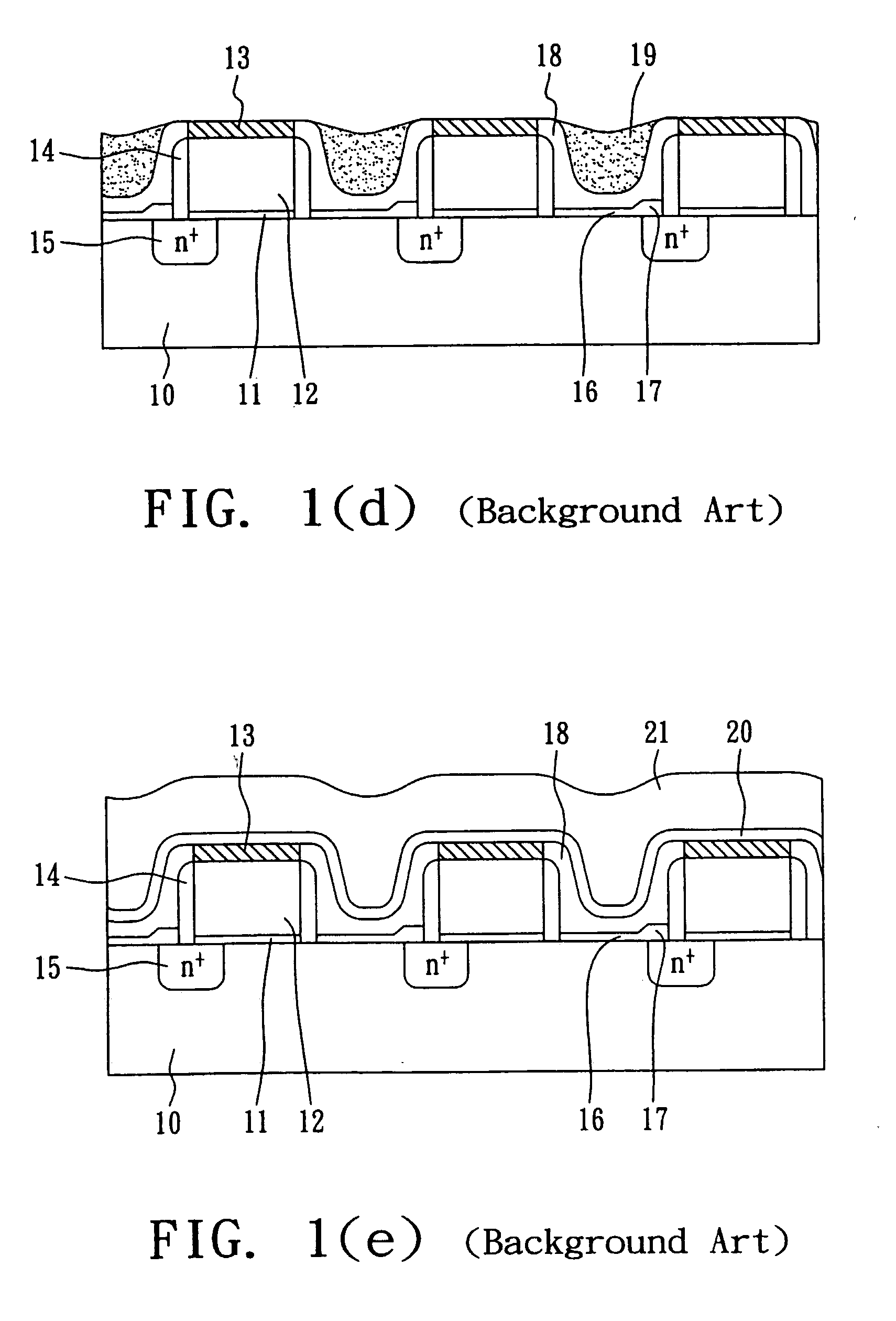Memory structure and manufacturing as well as programming method thereof
a memory structure and manufacturing technology, applied in the field of nonvolatile memory, to achieve the effect of flexible operation of floating gate memory cells and significant increase in memory structure density
- Summary
- Abstract
- Description
- Claims
- Application Information
AI Technical Summary
Benefits of technology
Problems solved by technology
Method used
Image
Examples
first embodiment
[0024] FIGS. 4(a) through 4(f) illustrate a process for forming the memory structure of the first embodiment in accordance with the present invention.
[0025] In FIG. 4(a), an ONO layer, a first conductive layer, an insulating layer are sequentially formed on a silicon substrate 401, and are patterned to be individual gate structures afterwards. Each gate structure comprises an ONO layer 402, a first conductive line 403 and an insulating layer 404. The first conductive line 403 may be composed of polysilicon, whereas the insulating layer 404 may be a multilayer of silicon nitride and silicon oxide. In FIG. 4(b), dielectric spacers 405 ranging from 100 to 300 angstroms and mask spacers 407, e.g., silicon nitride spacers, ranging from 200 to 800 angstroms are sequentially formed beside the first conductive lines 403. Then, photoresist is deposited and patterned as multiple photoresist caps 406 to cover one side mask spacer 407 of each first conductive line 403, and in consequence, as sh...
second embodiment
[0037] FIGS. 5(a) through 5(f) illustrate a process for forming the memory structure of the second embodiment in accordance with the present invention.
[0038] In FIG. 5(a), a gate dielectric layer, a first conductive layer and a silicon nitride layer are sequentially formed on a semiconductor substrate 501, and are patterned to be separated gate structures. Each gate structure comprises a gate dielectric layer 502, a first conductive line 503 and a silicon nitride layer 504, where the gate dielectric layer 502 is in the range of 70 to 150 angstroms, the first conductive line 503 is in the range of 400 to 2000 angstroms, and the silicon nitride layer 504 is in the range of 500 to 2000 angstroms. Then, dielectric spacers 506 ranging from 100 to 300 angstroms are formed beside the two sides of the first conductive line 503, followed by tilt-implanting dopants such as arsenic ions with an energy between 5×1014 and 5×1015 atoms / cm2, so as to form doping regions 505 serving as bitlines. In...
PUM
 Login to View More
Login to View More Abstract
Description
Claims
Application Information
 Login to View More
Login to View More - R&D
- Intellectual Property
- Life Sciences
- Materials
- Tech Scout
- Unparalleled Data Quality
- Higher Quality Content
- 60% Fewer Hallucinations
Browse by: Latest US Patents, China's latest patents, Technical Efficacy Thesaurus, Application Domain, Technology Topic, Popular Technical Reports.
© 2025 PatSnap. All rights reserved.Legal|Privacy policy|Modern Slavery Act Transparency Statement|Sitemap|About US| Contact US: help@patsnap.com



